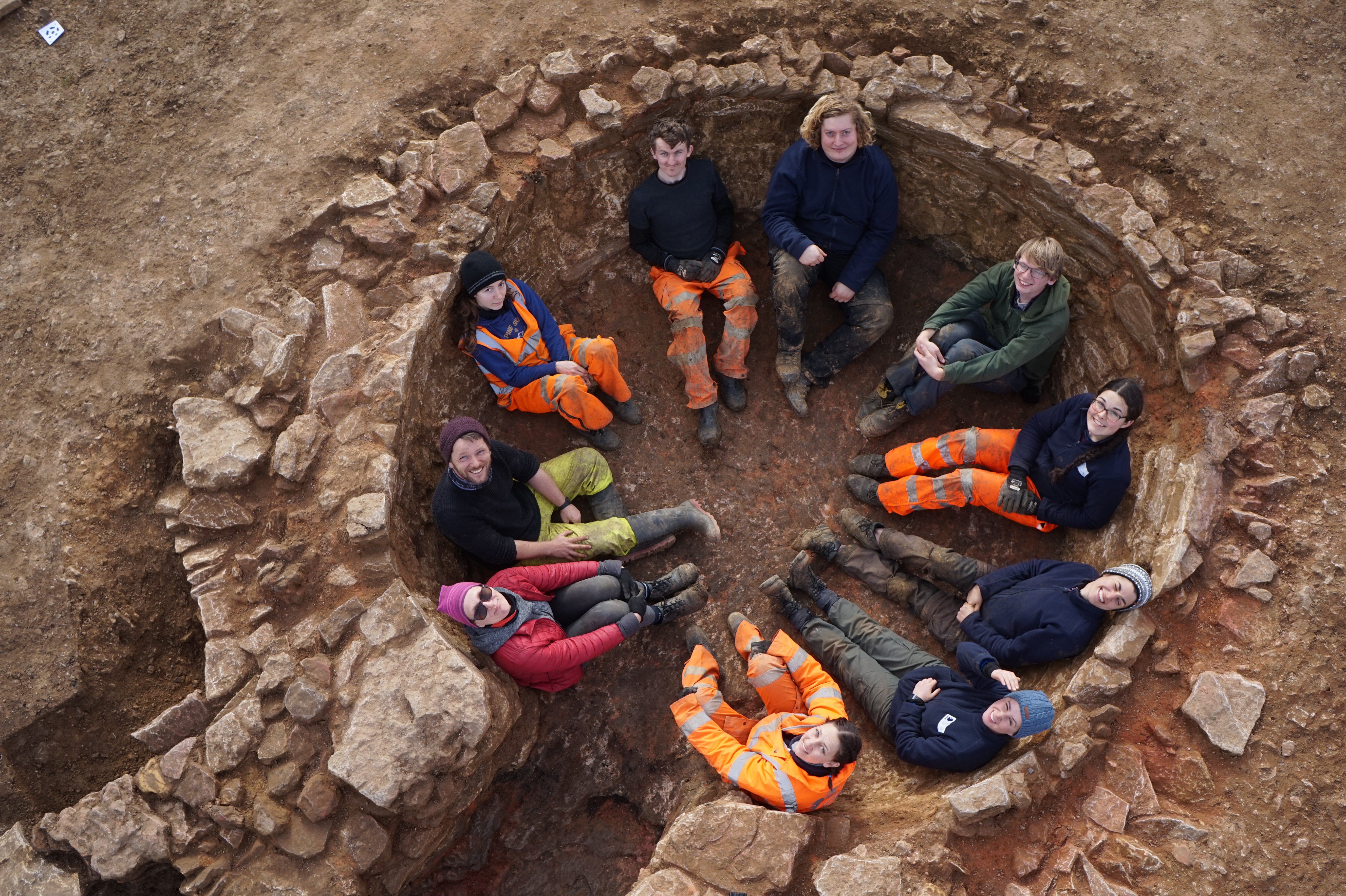Roman road sheds light on the workings of rural Roman Britain thanks to new excavations at Priors Hall Park
Posted 23 Jun 2023, 2:02 p.m.
A new phase of archaeological excavations at Priors Hall, Corby, has uncovered important features that help shed light on the dynamics and extent of social and economic change that followed the Roman Conquest in 43 AD.
A well-preserved Roman road, probably dating from the early stages of the Roman Conquest, and a Middle to Late Iron Age settlement with evidence of extensive ironworks were among the finds that emerged in the course of the excavations by Oxford Archaeology East (OAE) in 2021 and 2022. OAE returned to Priors Hall, Corby, in January 2021 for a new phase of excavations as part of the ongoing Urban&Civic development at the site.
These finds add to the Romano-British villa discovered in 2011, which was in use between the first and fourth centuries AD, and the associated temple/mausoleum uncovered in the course of the 2019 excavations, also by OAE, which was turned into a pottery, brick and tile manufacturing centre in the second and third centuries AD (as reported in Current Archaeology 370, December 2020, and on the Oxford Archaeology website here).
The Middle to Late Iron Age settlement is a very important piece of information that helps archaeologists better understand the changes in society, economy and culture in the early Roman period. The settlement started its life in 350 BC as a small group of roundhouses. By the Late Iron Age (between 100 BC and 50 AD), it had become a small but prosperous village whose inhabitants focused on iron production and working, as evidenced by the large amount of metalworking waste in it and the presence of an iron smelting site only 1 km away (found in 2006). As the village’s abandonment coincides with the date of the construction of the villa, it is very likely that the inhabitants and, crucially, their ironworks had quickly integrated within the new Roman system and adopted a more Roman lifestyle with the construction and inhabitation of the villa complex.
Other evidence from the excavations also draws an interesting parallel with 20th century Corby as an important steelworks centre. While no finds typical of a farming estate were found, ample evidence of continued and expanded iron production and works confirms that metalwork played a vital role in the local economy already in Roman times.
Setting this villa in the wider local context shows that this area had a developed and well organised rural economy in which different estates had specific roles: the villa at nearby Little Weldon, built in the late first century AD, presented only evidence of farming, as did the one at Stanion, located 4 km from Priors Hall.
A typically well-built Roman road linked these three estates to the larger centres at Irchester and Kettering as well as other iron working sites at Laxton and Great Casterton to the north. A long stretch of the road was excavated only 1 km from the Priors Hall villa. Measuring 17m in width, it was found to be very well-preserved and clear sign of regular use were very evident. OAE archaeologists also uncovered clear signs that the road had been repaired in the third century AD, probably to better service not only Priors Hall’s ironworking site but also the pottery, brick and tile manufacture discovered in 2019.
These exciting archaeological findings have recently been shared with local school children. In autumn term 2022, archaeologists from OAE, supported by Urban&Civic, visited the Year 3 classes at Priors Hall – A Learning Community, and the Year 7 students at Corby Business Academy, who have all been learning about local history. As the Priors Hall development progresses, the site of the Roman villa will become a scheduled ancient monument with information boards telling the story of its history, complemented by future road names having a Roman theme.
You can find out more in the recent Current Archaeology article.
Nigel Wakefield, Development Director at Urban&Civic, said: “We always knew that we had a rich Roman history at Priors Hall and it’s been fascinating to learn from these most recent discoveries more about the workings of rural Roman Britain. As master developers, it is important for us to uncover and preserve this history and we’re delighted with the role that Oxford Archaeology have played in this process. We are ensuring that the history is not only preserved locally, but also communicated to our residents and they can feel proud to be part of the next community living on this site.”
Stephen Macauley, Deputy Regional Manager at Oxford Archaeology East, said: “Our investigations at Priors Hall Corby continue to reveal the most exciting and important archaeological remains, and the discover of a Roman Road of such exceptional preservation has allowed to even better understand how the Roman Villa lay in the wider landscape and to reveal what life was like here almost 2,000 years ago. Our work for and with Urban and Civic means we can tell this story of the old community to the new community who will live in the houses that will be built.”
Liz Mordue, Archaeological Advisor at North Northamptonshire Council, said: “The excavations at Priors Hall have provided an unparalleled opportunity to investigate the wider estate of a Roman villa, and have given us a new perspective on these high-status estates, as well as showing us the Iron Age precursor. This has also been a clear demonstration of the way archaeological works fit into the planning and development process and can deliver material not only for academic debate but also for public interest and education."
Share
Add to Home Screen
Install this to your home screen for easy access in the future.
